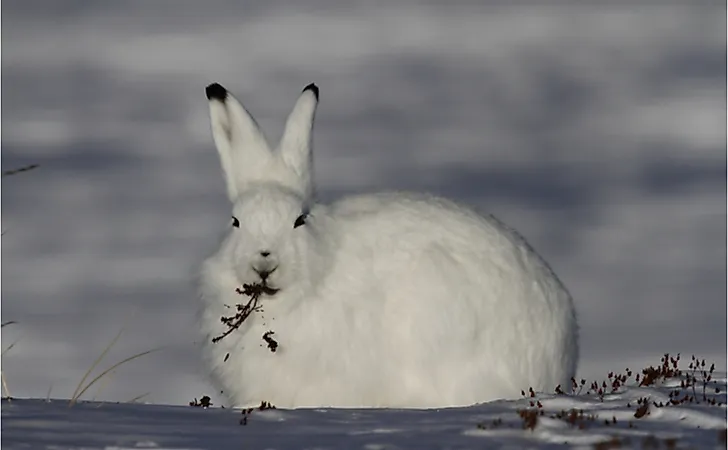How Is The Arctic Hare Adapted To Its Environment?

The Arctic hare is a species of hare that is adapted to icy biomes, particularly the Arctic tundra. It survives the harsh climate thanks to its shortened limbs and ears, tiny nose, a thick coat, a body that is 20% fat, and its ability to dig holes beneath the snow to escape the cold wind. The Arctic hare resembles the rabbit but has shorter ears, can stand upright, and thrives in icy habitats. They are loners but can travel in a grove to keep watch for predators and huddle together to stay warm. The hare inhabits northern Greenland and northern Canada. It is listed as of least concern because it thrives in the cold environment of the Arctic. The following are some of the adaptations of the Arctic hare.
Speed and Camouflage
Arctic hares can clock speeds of up to 40 miles an hour thanks to the taller hind legs that make the animals slightly larger than rabbits. The tall, muscular hind legs allow the hare to jump further in deep snow and stand upright. During winter, the coats are snow white and provide excellent camouflage, but towards spring, the color changes to blue-gray to match vegetation and local rocks.
Breeding
Arctic hares are mostly found alone but can sometimes be found in groups of up to a hundred members. Unlike mammals and other animals, arctic hares disperse rather than converge during the mating season. Males and females pair up and establish mating territories though males can mate with more than one partner. This practice lowers the chances of being detected by predators considering that the process is distractive. Females give birth to one litter of between 2 to 8 young ones that mature very fast.
Diet
Food is scarce in the arctic, but the hare survives throughout the year by feeding on a diet that consists of woody plants, lichens, grasses, and mosses during the winter, and leaves, roots, berries, buds, and bark in summer.
Low Surface Area
Although arctic hares are larger than rabbits, they have a low surface area to volume ratio compared to their relatives in the warmer climates. Their stockier bodies retain fat and prevent heat from escaping. About 20% of their body consists of fat.
Paws
The paws of the Arctic hare are padded with the fur to help the animal spread weight while walking on snow and provide insulation from icy surfaces. The broad paw also provides a better grip on slippery surfaces, especially when running from predators.
Burrows
Arctic hares dig burrows beneath the snow to escape frigid weather. Digging burrows is a quick and easy way of avoiding the biting wind. Besides, they provide refuge from predators. A single hare inhabits a single burrow unless it is a female with her young ones.
Droves
Arctic hares are loners, but during the winter months, they move and live in droves of up to 100 members to detect predators and keep warm. During snowstorms, they huddle together under a tree for warmth. When attacked, the hares disperse to confuse predators.
Sense of Smell
Arctic hares have a very keen sense of smell that allows them to find food hidden beneath the snow and detect predators before they strike.











